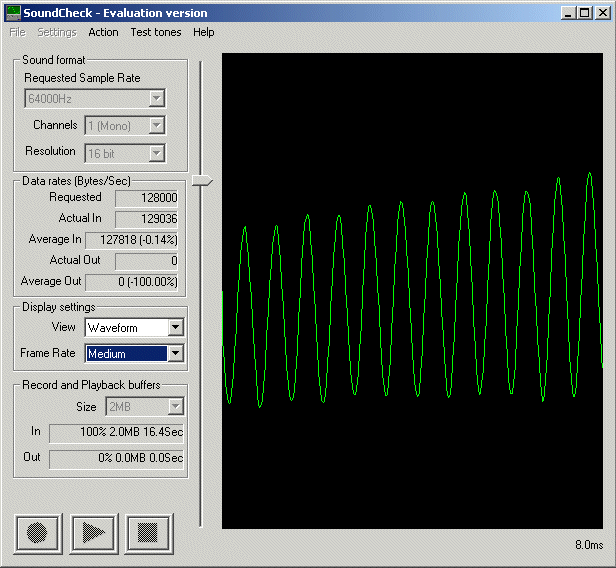
- UNINSTALL THE TRUSTED PLATFORM MODULE DRIVER INSTALL
- UNINSTALL THE TRUSTED PLATFORM MODULE DRIVER DRIVERS
- UNINSTALL THE TRUSTED PLATFORM MODULE DRIVER UPDATE
Intel PTT supports BitLocker* for hard drive encryption and supports all Microsoft requirements for firmware Trusted Platform Module (fTPM) 2.0.įind if your NUC supports these technologiesĬheck the specifications for your Intel NUC at, in the Advanced Technologies section. Continue to the next step to clear the Trusted Platform Module (TPM). A TPM chip is a secure crypto-processor that is designed to carry out cryptographic operations. Check the TPM box on the right to switch on the TPM. Highlight the TPM 2.0/1.2 section on the left. In the Security section, locate the TPM option. Once in the BIOS, locate the section that configures Security. That folder will be located in C:SWSetupsp40553. Trusted Platform Module (TPM) technology is designed to provide hardware-based, security-related functions. As the computer performs POST, press the hotkey (usually F2 or Delete) to enter the BIOS. a tpm chip is a secure crypto processor that is designed to carry out cryptographic operations.
UNINSTALL THE TRUSTED PLATFORM MODULE DRIVER INSTALL
Select the Browse my computer for driver software option and browse to the driver folder that was created when you ran the file. Install or uninstall tpm diagnostics tool in windows 11 trusted platform module (tpm) technology is designed to provide hardware based, security related functions.

Using the search box on the taskbar, search for and open Device Manager. Go to the device manager and click on the TPM device needing the driver. Intel PTT is a platform functionality for credential storage and key management used by Windows 8*, Windows® 10 and Windows* 11. Uninstall the driver in Device Manager, and then reinstall the driver from HP Customer Support.
UNINSTALL THE TRUSTED PLATFORM MODULE DRIVER DRIVERS
Backing up your drivers provides you with the security of knowing that you can rollback any driver to a previous version if something goes wrong.Windows* 11 requires Trusted Platform Module (TPM) as stated in their System Requirements.
UNINSTALL THE TRUSTED PLATFORM MODULE DRIVER UPDATE
If the driver was not updated or the update did not fix the problem, uninstall and reinstall the driver. An update program not only provides the right drivers that are compatible with your hardware, but it also guarantees that there is a backup of current drivers before any changes are made. The Trusted Platform Module selected in the Device Manager utility. Do the same for Ignore the local list of blocked TPM commands - change this to Enabled. Double click on Ignore the default list of blocked TPM commands, and change it from the default setting of Not Configured, to Enabled. 'Almost every CPU in the last 5-7 years has a TPM. Browse to Computer Configuration > Administrative Templates > System > Trusted Platform Module Services. I have done this numerous times on every restart. For Intel Process, this technology is called Intel Platform Trust Technology (Intel PTT), and for AMD, it is called AMD Platform Security Processor. You will lose all created keys and access data encryption by these keys. Warning clearing erases information started on the TPM. It is strongly recommended to use a driver updating program as updates can be time consuming and complex. A configuration change was requested to clean this computers TPM ( trusted platform module). Incorrect hardware drivers can lead to more serious issues than just a faulty installation. Find out Firmware and Update it automatically. Find out Security devices and then Update the Trusted Platform Module driver.

Download, install and run Driver Booster. While finding, downloading, and manually updating your Trusted Platform Module 1.2 drivers takes a lot of time, the process can also be confusing. In this case, Driver Booster can be a powerful tool for you to update driver and firmware automatically and quickly. Setting boot mode to UEFI is the most secure value for Boot Mode. It can be incredibly difficult to find the exact driver for your Trusted Platform Module 1.2-based hardware unit, even directly on the website of Winbond or a related manufacturer. System Settings Security Trusted Platform Module OneCLI: TrustedComputingGroup.DeviceOperation 'Update to TPM2.0 compliant' Set Boot Mode to UEFI Boot Mode determines which mode the system used to boot. The exciting news is that you can likely update the Motherboard device drivers in order to avoid malfunctions.

Device drivers can malfunction without warning, leading to data loss. Trusted Platform Module 1.2 errors are often caused by viruses of outdated and corrupted device drivers. Windows has supported drivers for the Trusted Platform Module 1.2 hardware.


 0 kommentar(er)
0 kommentar(er)
